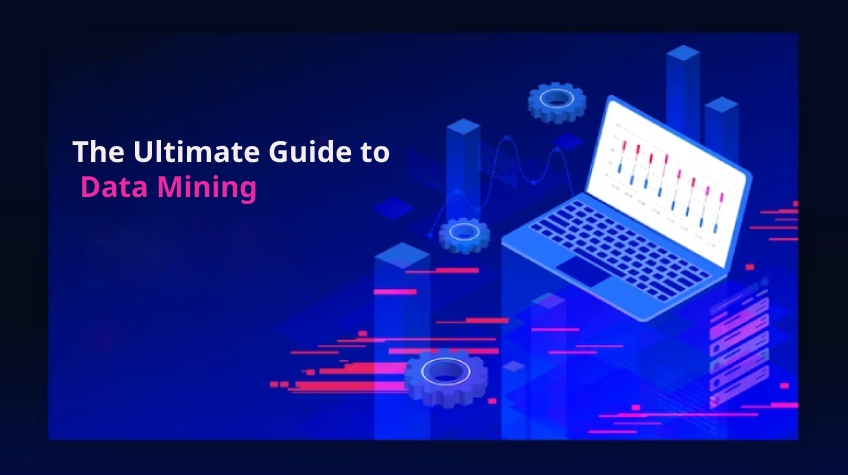
Data mining is a powerful technique that uncovers valuable insights hidden within vast amounts of data. In this ultimate guide, we will explore SEO-optimized strategies to harness the potential of data mining and propel your business to new heights. Get ready to unlock hidden opportunities and gain a competitive edge in today’s data-driven world.
Table of Contents
- What is Data Mining?
- Common Data Mining Techniques
- Step-by-Step Process of Data Mining
- Association Rule Mining in Data Mining
- Optimizing Data Mining for SEO Purposes
- Data Mining for Business Intelligence
- Challenges or Limitations
- Successful Data Mining Applications in Business
- Key Considerations When Implementing Data Mining Strategies
- Data Mining for Improving Customer Segmentation and Targeting
- Ethical Considerations
- Benefits of Data Mining in Industries
- Tools for Data Mining
- Identifying Patterns and Trends in Large Datasets
- Predictive Analytics and Forecasting for Business Intelligence
What is Data Mining?
Data mining is the process of extracting valuable information and uncovering hidden patterns, trends, and insights from large datasets. It involves using various techniques, algorithms, and statistical models to analyze data and discover meaningful patterns that can be used to make informed business decisions. Data mining helps businesses by providing them with valuable insights that can be used to optimize operations, improve customer satisfaction, identify market trends, and enhance overall business performance.
Common Data Mining Techniques
There are several common data mining techniques that are used to extract valuable information from datasets. These include classification, clustering, regression, association rule mining, and anomaly detection. Classification involves categorizing data into predefined classes or groups based on certain attributes.
Clustering involves grouping similar data points together based on their similarities. Regression involves predicting numerical values based on historical data. Association rule mining involves discovering relationships and associations between different variables in a dataset. Anomaly detection involves identifying unusual or abnormal patterns in the data.
Step-by-Step Process of Data Mining
The step-by-step process of data mining typically involves several stages. These include data collection, data preprocessing, data transformation, data modeling, and interpretation of results. In the data collection stage, relevant data is gathered from various sources. In the data preprocessing stage, the data is cleaned and prepared for analysis by removing inconsistencies, handling missing values, and dealing with outliers.
In the data transformation stage, the data is transformed into a suitable format for analysis. In the data modeling stage, various algorithms and techniques are applied to the data to extract patterns and insights. Finally, in the interpretation stage, the results of the analysis are interpreted and used to make informed business decisions.
Association Rule Mining in Data Mining
Association rule mining is a specific data mining technique that focuses on discovering relationships and associations between different variables in a dataset. It involves finding patterns in the form of if-then rules, where certain items or events are associated with each other. Association rule mining is particularly useful for businesses as it can help uncover hidden relationships between products, customer behavior, and market trends.
This information can be used to optimize product recommendations, improve cross-selling and upselling strategies, and enhance overall customer satisfaction.
Optimizing Data Mining for SEO Purposes
Data mining can also be utilized for SEO purposes to optimize website performance and improve search engine rankings. By analyzing user behavior, search patterns, and website metrics, businesses can identify keywords and content strategies that are most effective in driving traffic and conversions.
Data mining can also help identify potential issues or errors on a website that may be affecting its performance and visibility in search engines. By leveraging data mining techniques for SEO, businesses can gain a competitive advantage and improve their online presence.
Data Mining for Business Intelligence
Data mining plays a crucial role in enhancing business intelligence and decision-making processes. By extracting valuable insights from data, businesses can gain a deeper understanding of their customers, markets, and operations. This information can be used to identify new business opportunities, optimize marketing campaigns, improve customer segmentation and targeting, and make data-driven decisions.
Data mining also helps businesses identify patterns and trends that may not be easily visible through traditional analysis methods, enabling them to stay ahead of the competition and make informed strategic decisions.
Challenges or Limitations
Despite its numerous benefits, data mining also comes with potential challenges and limitations. One major challenge is the availability and quality of data. Data mining relies heavily on the availability of large and diverse datasets, and if the data is incomplete, inconsistent, or of poor quality, the results of the analysis may be unreliable. Another challenge is the complexity of data mining algorithms and techniques, which may require specialized skills and expertise to implement and interpret accurately.
Additionally, there are ethical considerations associated with data mining, such as privacy concerns and the potential misuse of personal data. It is important for businesses to address these challenges and limitations to effectively leverage data mining for their benefit.
Successful Data Mining Applications in Business
Real-life examples of successful data mining applications in business can be found across various industries. For instance, in the retail industry, data mining is used to analyze customer purchase patterns and preferences, enabling businesses to personalize marketing campaigns and improve product recommendations.
In the healthcare industry, data mining is used to analyze patient data and identify patterns that can help in early detection and prevention of diseases. In the financial industry, data mining is used to detect fraudulent activities and identify potential risks. These examples highlight the wide range of applications and benefits that data mining can offer to businesses in different sectors.
Key Considerations When Implementing Data Mining Strategies
When implementing data mining strategies in business, there are several key considerations to keep in mind.
Firstly, businesses need to clearly define their objectives and goals for data mining to ensure that the analysis is focused and aligned with their specific needs.
Secondly, businesses should ensure they have access to high-quality and relevant data to achieve accurate and reliable results.
Thirdly, businesses should invest in the right tools and technologies that can support their data mining efforts effectively.
Lastly, businesses should have the necessary skills and expertise in place to implement and interpret data mining techniques correctly.
Data Mining for Improving Customer Segmentation and Targeting
Data mining can significantly improve customer segmentation and targeting for businesses. By analyzing customer data, businesses can identify distinct segments based on demographics, behavior, preferences, and purchasing patterns. This information can then be used to tailor marketing campaigns, personalize product recommendations, and improve customer experiences.
By targeting specific customer segments with relevant and personalized offers, businesses can increase customer satisfaction, loyalty and ultimately drive revenue growth.
Ethical Considerations
Ethical considerations play a crucial role when using data mining techniques in business. Businesses must ensure that they adhere to legal and ethical guidelines when collecting, storing, and analyzing data. This includes obtaining proper consent from individuals, protecting sensitive information, and using data in a responsible and transparent manner.
Businesses should also be transparent with their customers about how their data is being used and provide them with options to opt-out or control their data. By prioritizing ethical considerations, businesses can build trust with their customers and maintain a positive reputation.
Benefits of Data Mining in Industries
Leveraging data mining can provide businesses with a competitive advantage in the industry. By uncovering hidden insights and patterns, businesses can gain a deeper understanding of their customers, markets, and competitors. This knowledge can be used to identify new business opportunities, optimize marketing strategies, and make informed decisions that give them an edge over their competitors.
By utilizing data mining effectively, businesses can stay ahead of the curve and adapt to changing market dynamics, ultimately leading to improved performance and success.
Tools for Data Mining
There are several effective tools and technologies available for data mining. These include popular software such as RapidMiner, IBM SPSS Modeler, SAS Enterprise Miner, and Python libraries like scikit-learn and TensorFlow. These tools provide a wide range of functionalities and algorithms for data preprocessing, modeling, and analysis.
Additionally, cloud-based platforms like Amazon Web Services (AWS) and Google Cloud Platform (GCP) offer scalable and cost-effective solutions for data mining, allowing businesses to leverage the power of big data analytics without significant infrastructure investments.
Identifying Patterns and Trends in Large Datasets
Data mining is all about identifying patterns and trends in large datasets. By analyzing vast amounts of data, businesses can uncover hidden insights and make data-driven decisions. Data mining techniques such as clustering and association rule mining can help identify patterns and relationships between different variables.
For example, in customer behavior analysis, data mining can reveal patterns in purchasing habits, preferences, and demographics that can be used to tailor marketing strategies and improve customer experiences. By identifying patterns and trends, businesses can optimize their operations, improve efficiency, and gain a competitive advantage in the market.
Predictive Analytics and Forecasting for Business Intelligence
Data mining plays a significant role in predictive analytics and forecasting for business intelligence. By analyzing historical data, businesses can develop models and algorithms that can predict future trends, behaviors, and outcomes. This information is crucial for businesses to make informed decisions, plan for the future, and mitigate potential risks.
For example, in demand forecasting, data mining techniques can be used to analyze historical sales data and predict future demand, enabling businesses to optimize inventory management and production planning. Predictive analytics powered by data mining can provide businesses with a competitive advantage by enabling them to anticipate market trends and customer needs.
Conclusion:
Data mining is a powerful tool that businesses can utilize to uncover hidden insights and boost their performance. By applying data mining techniques, businesses can optimize their operations, improve customer satisfaction, identify market trends, and enhance overall business performance. Additionally, data mining can also be leveraged for SEO purposes to optimize website performance and improve search engine rankings. By combining data mining with SEO-optimized strategies, businesses can gain a competitive advantage and achieve success in the digital landscape.






